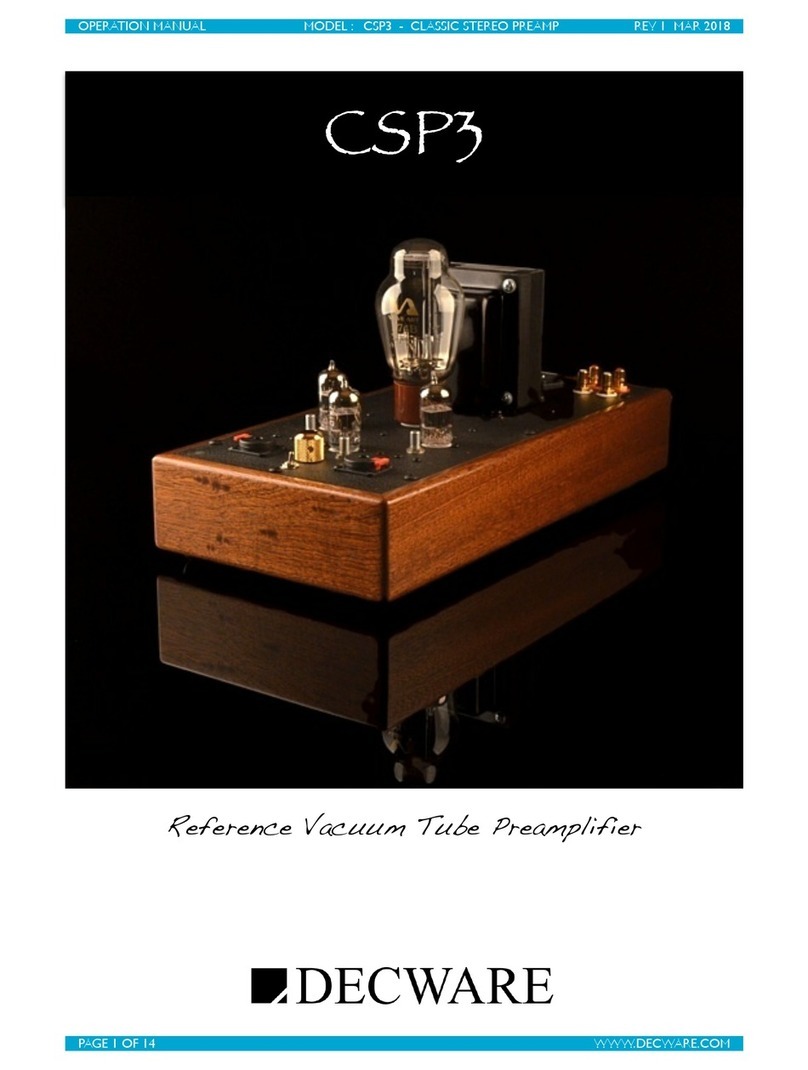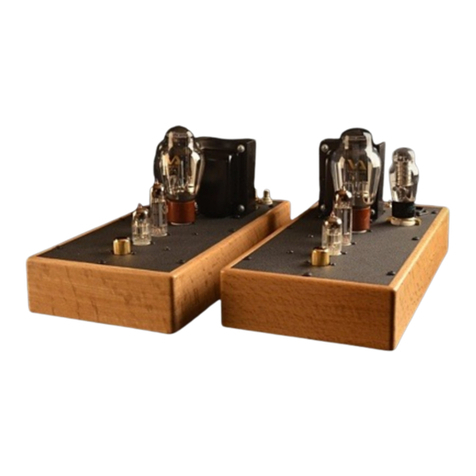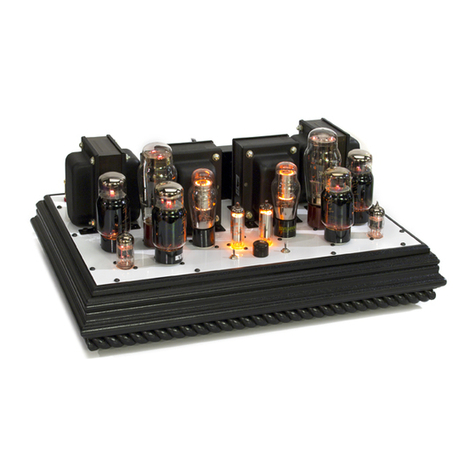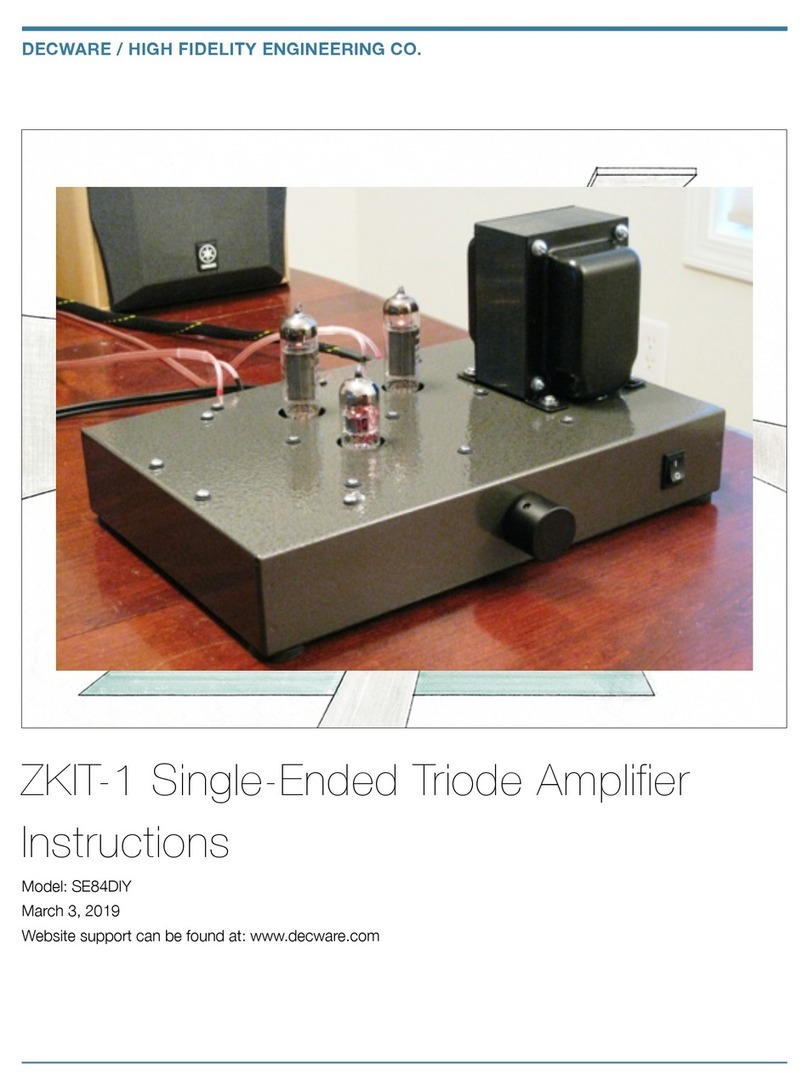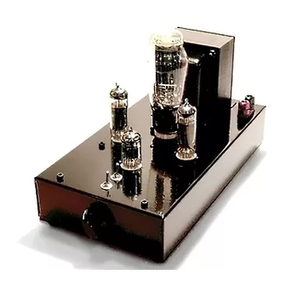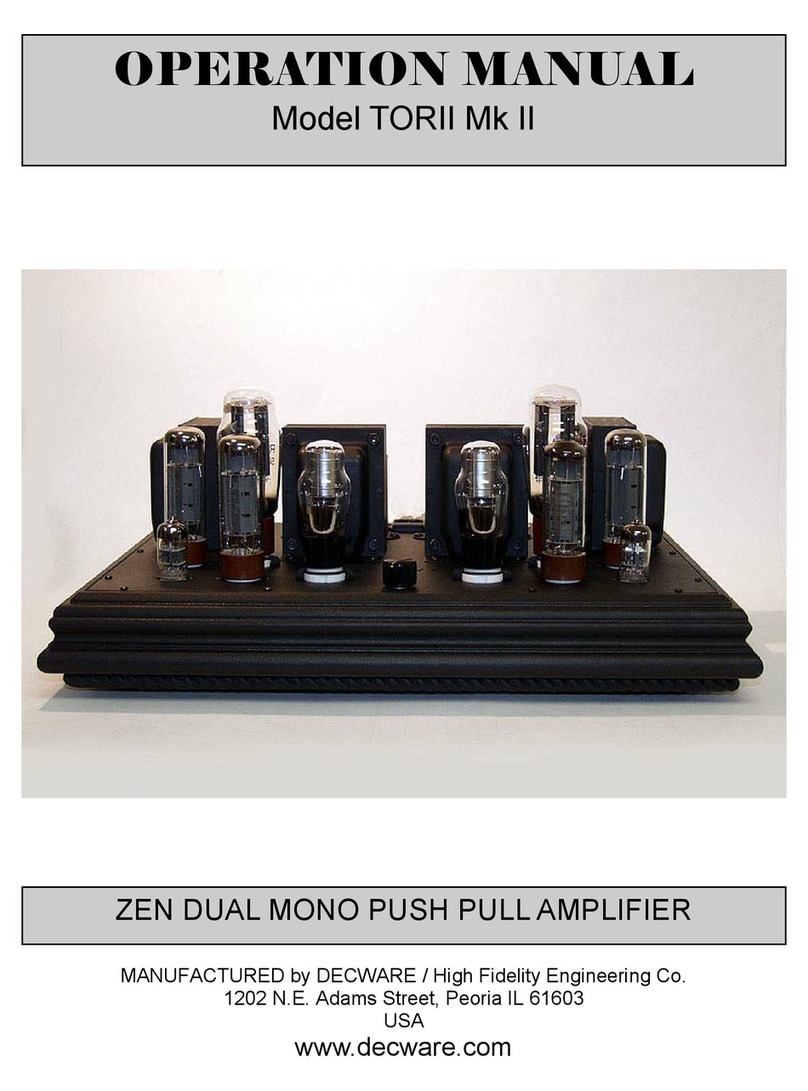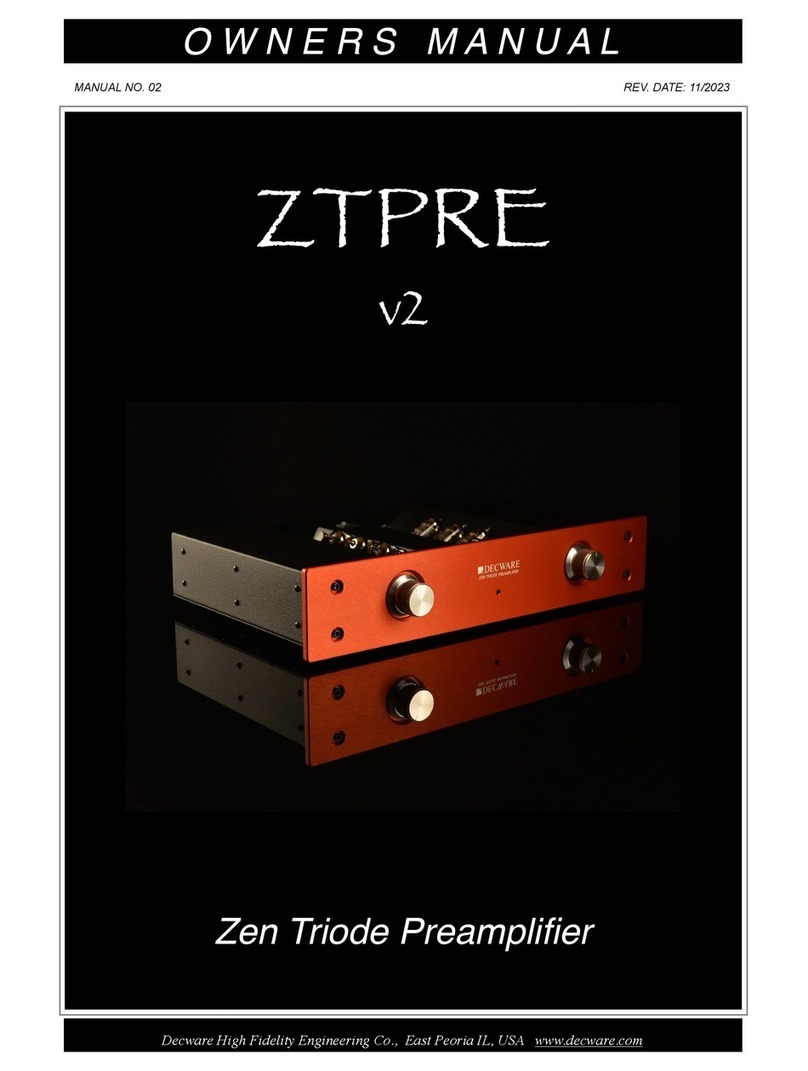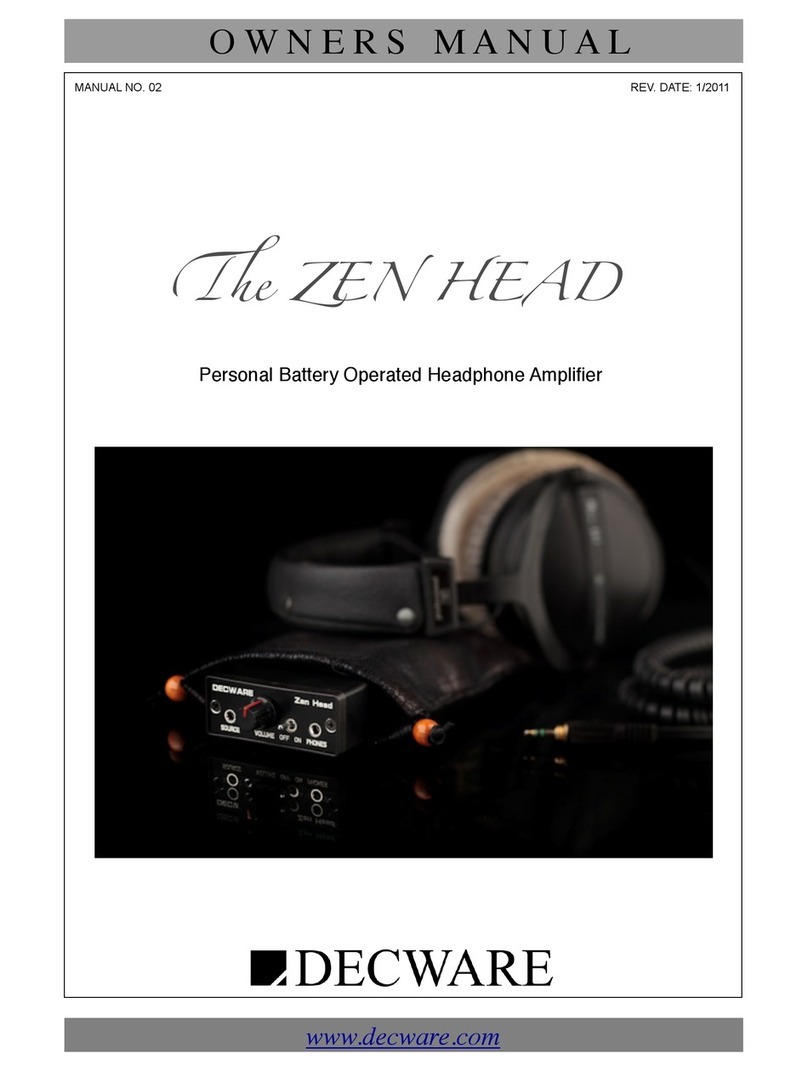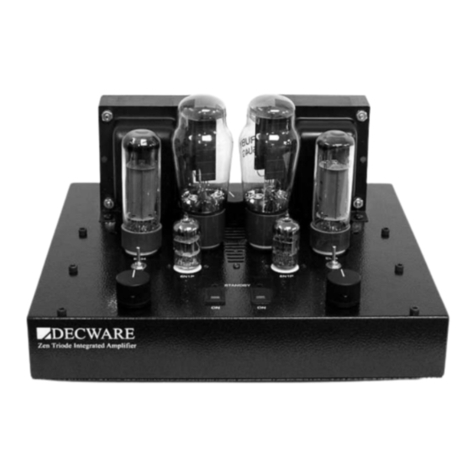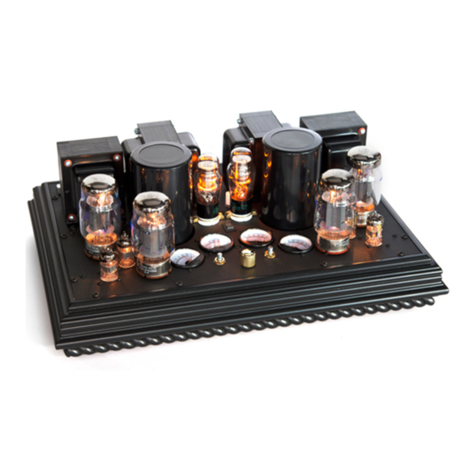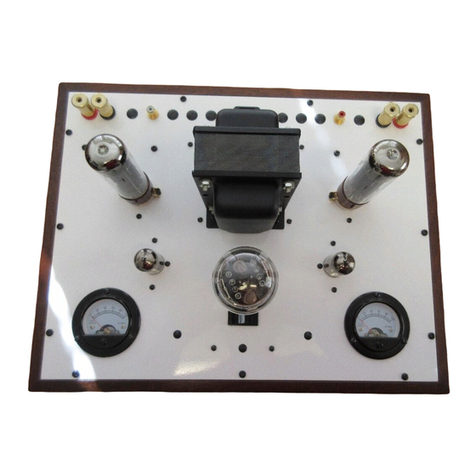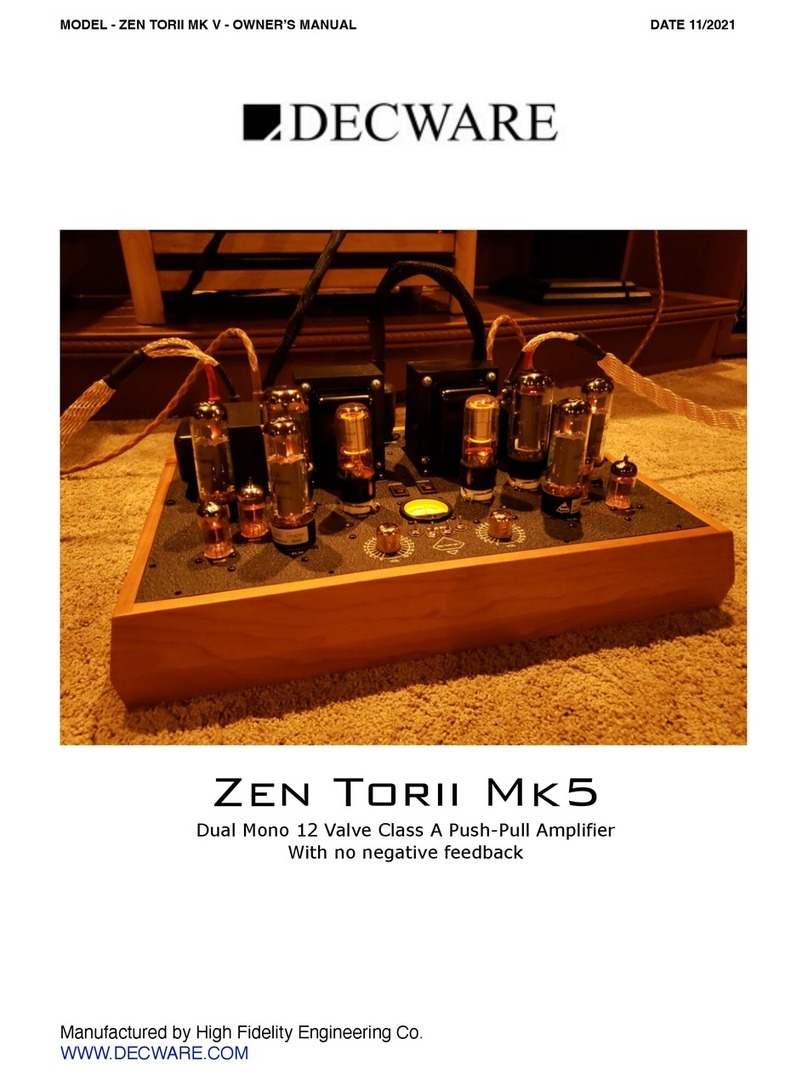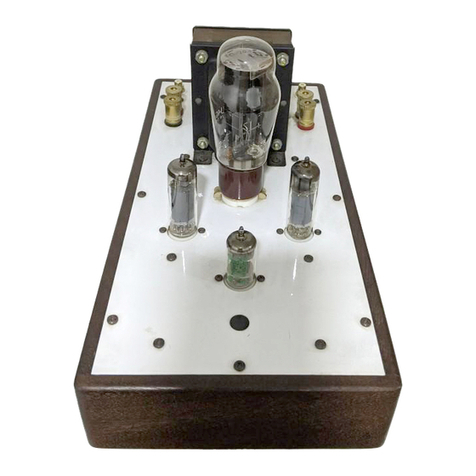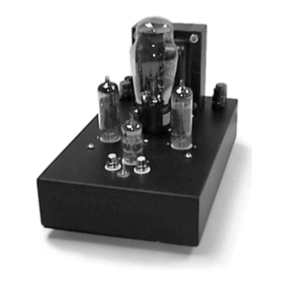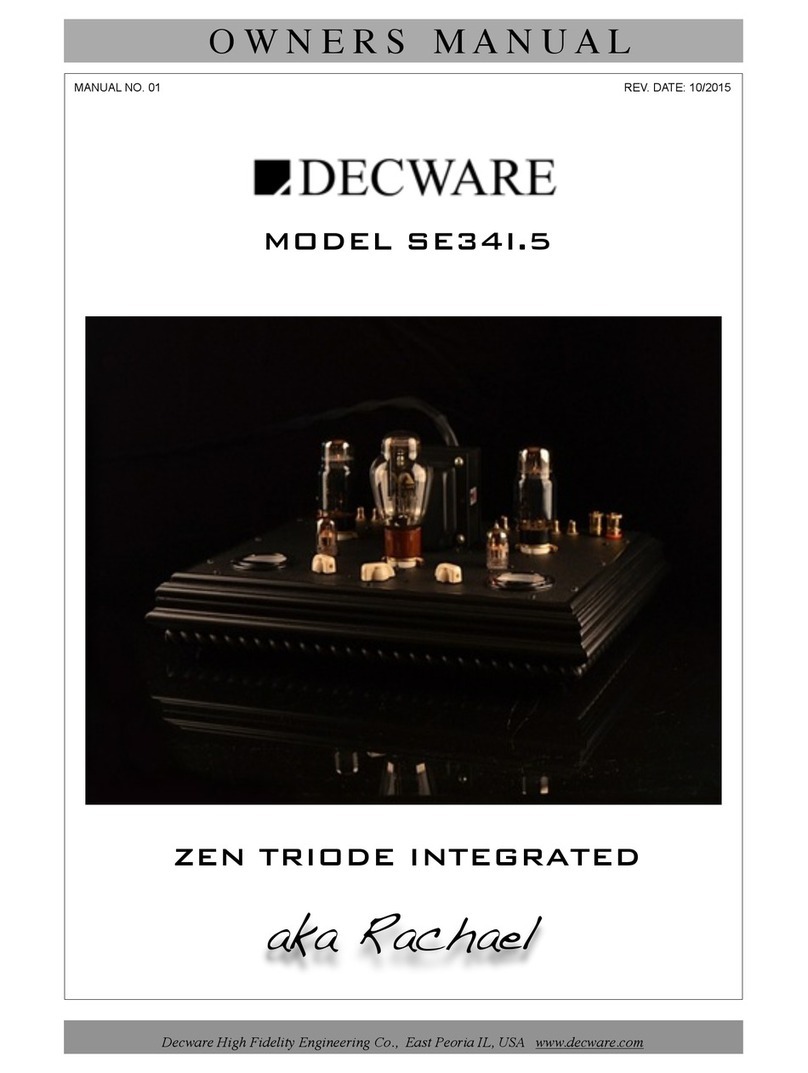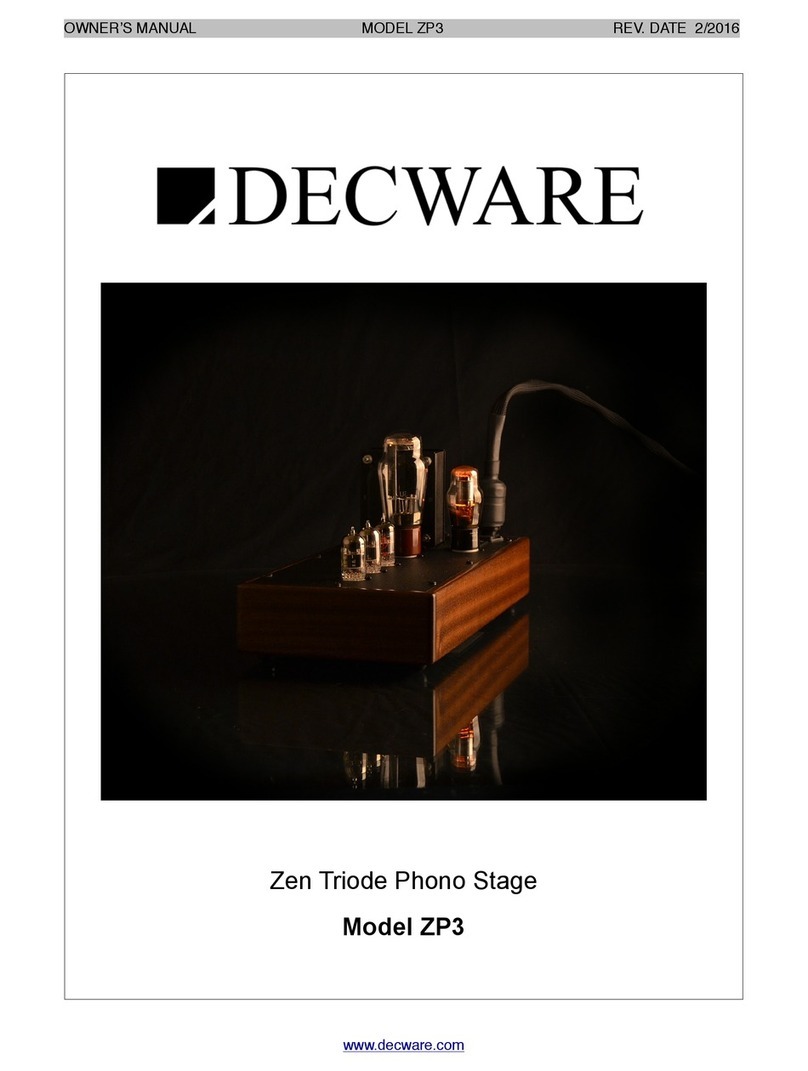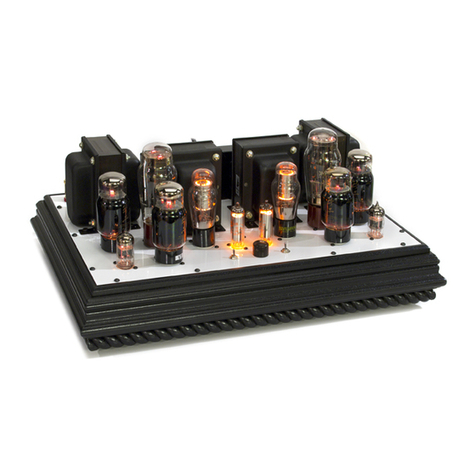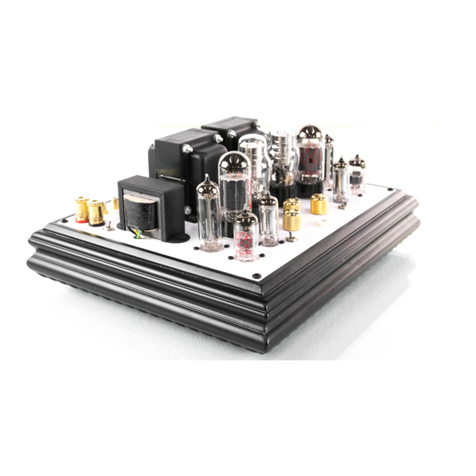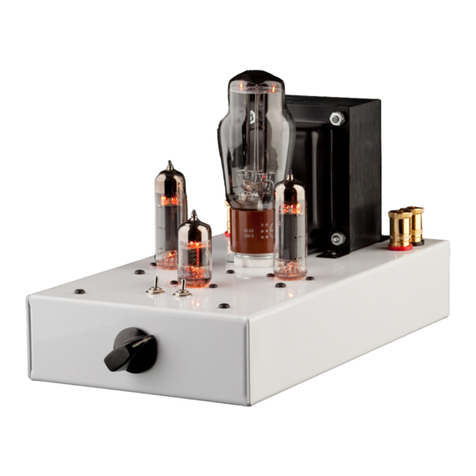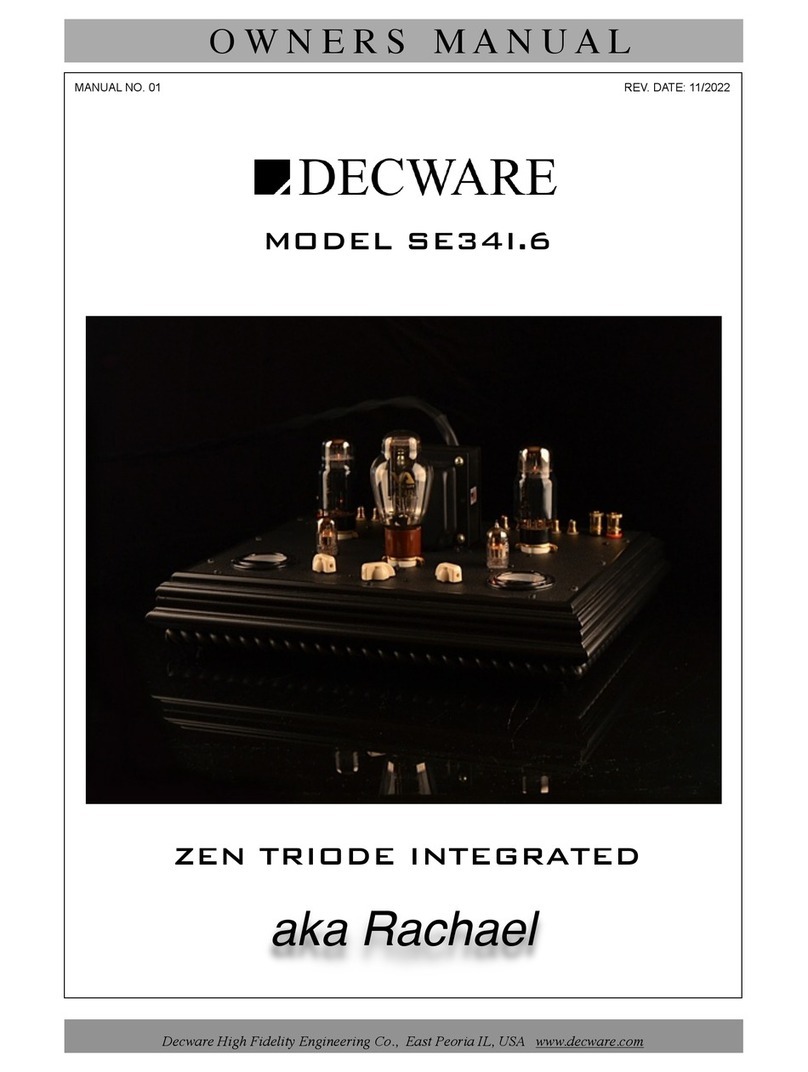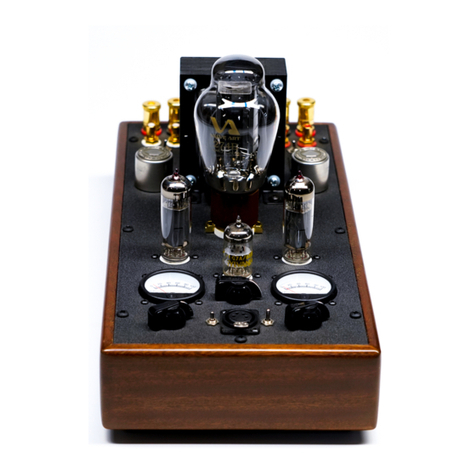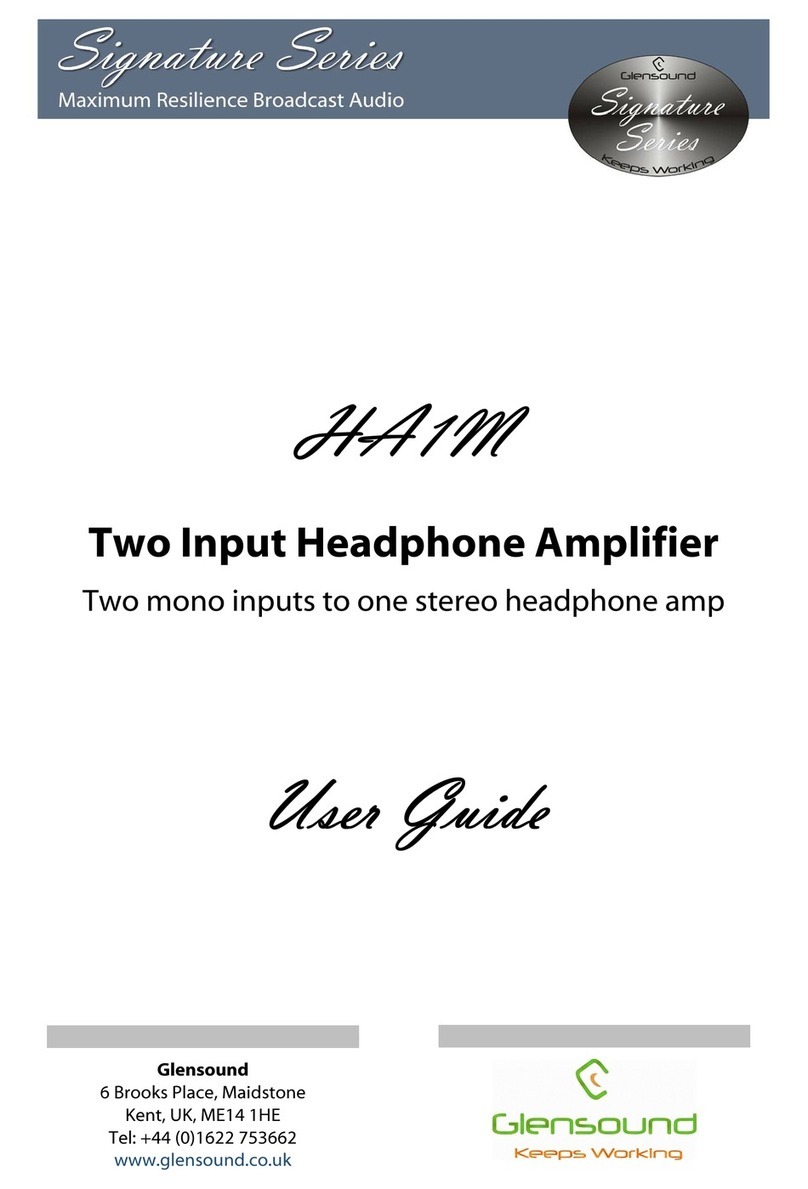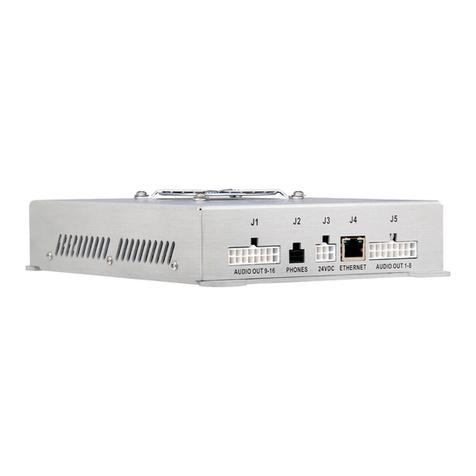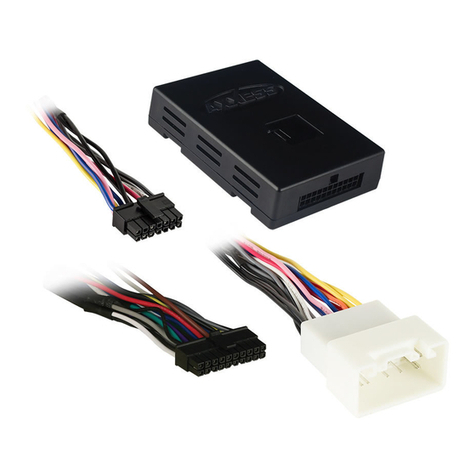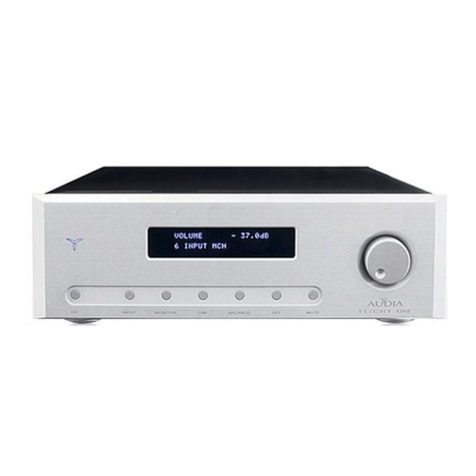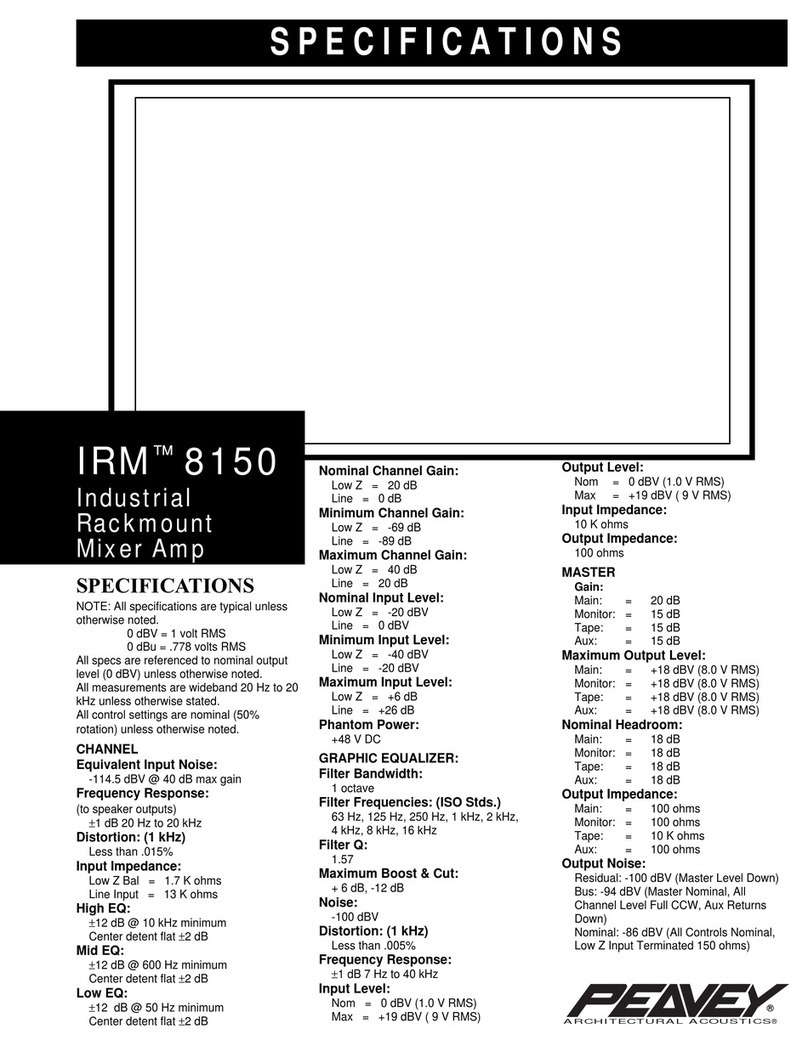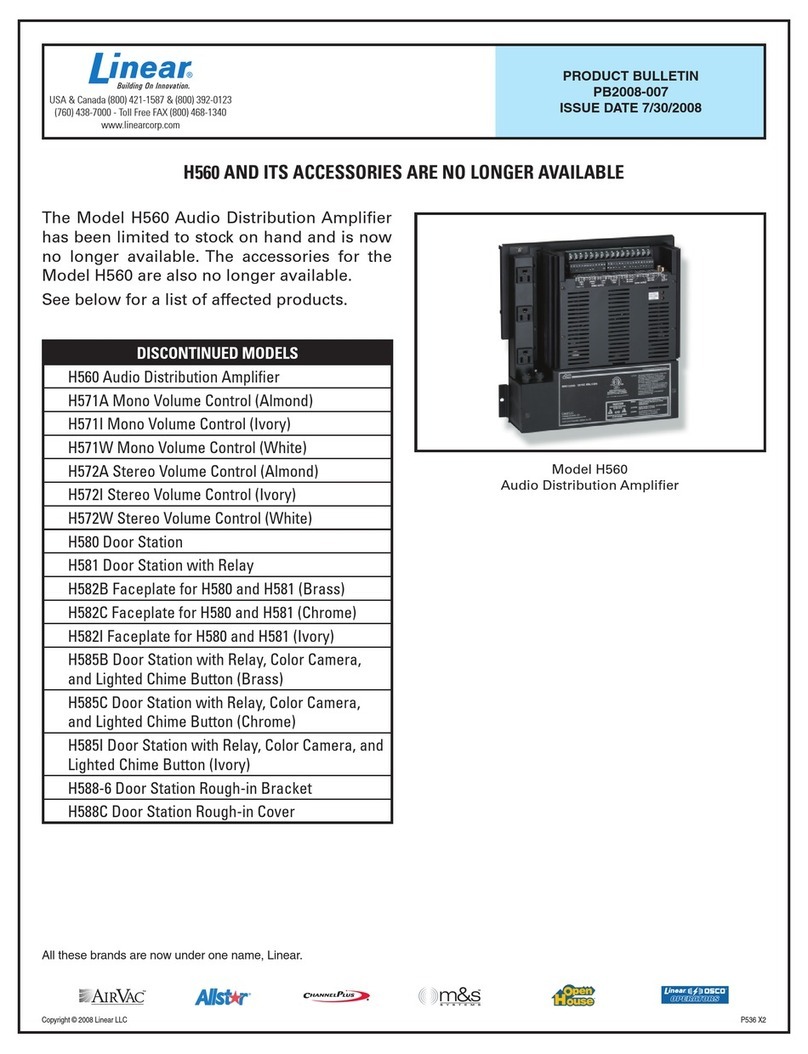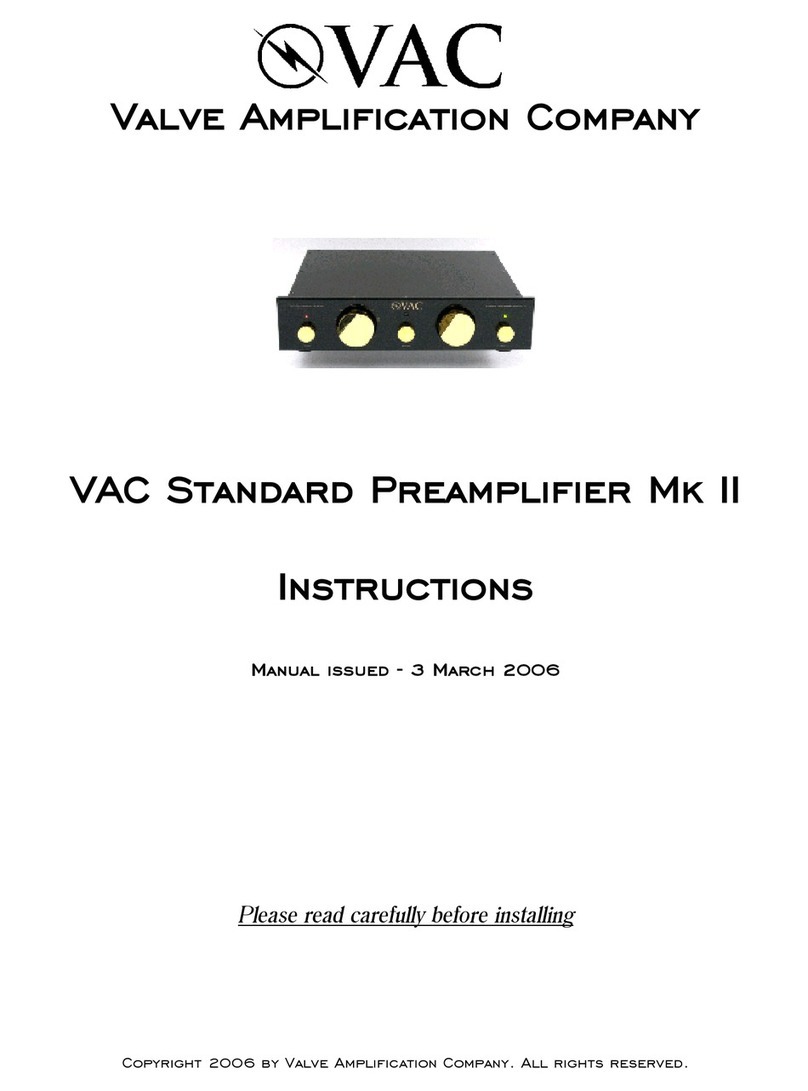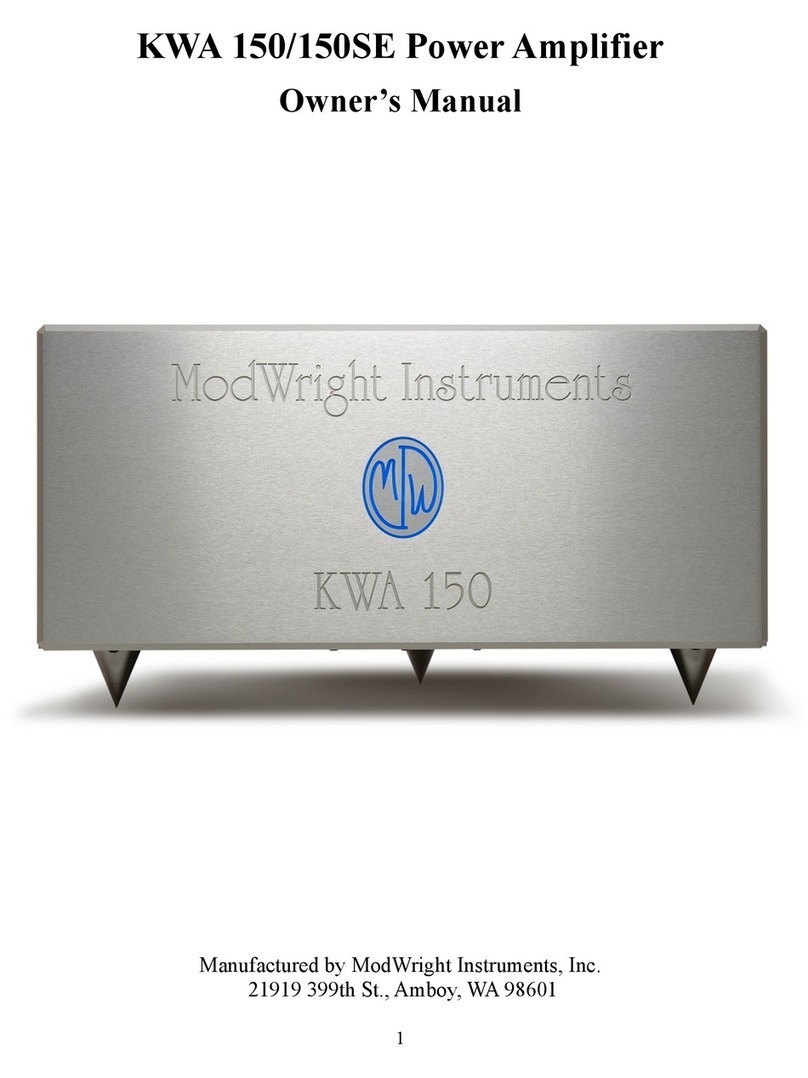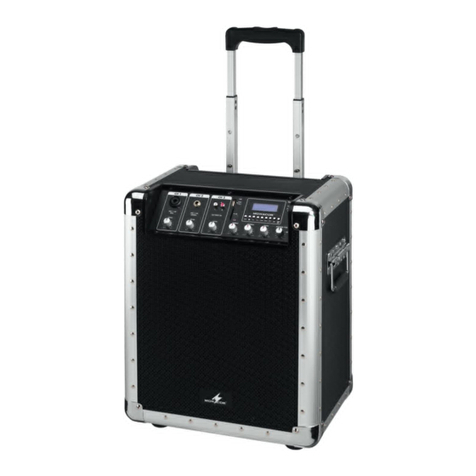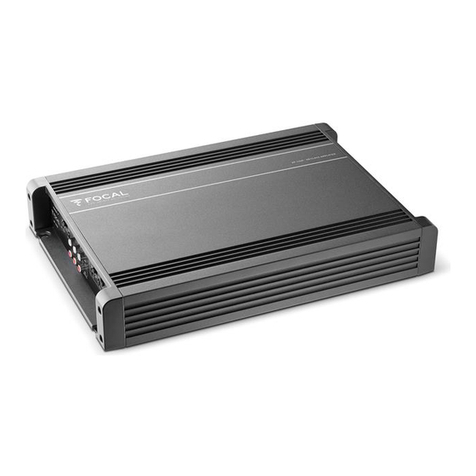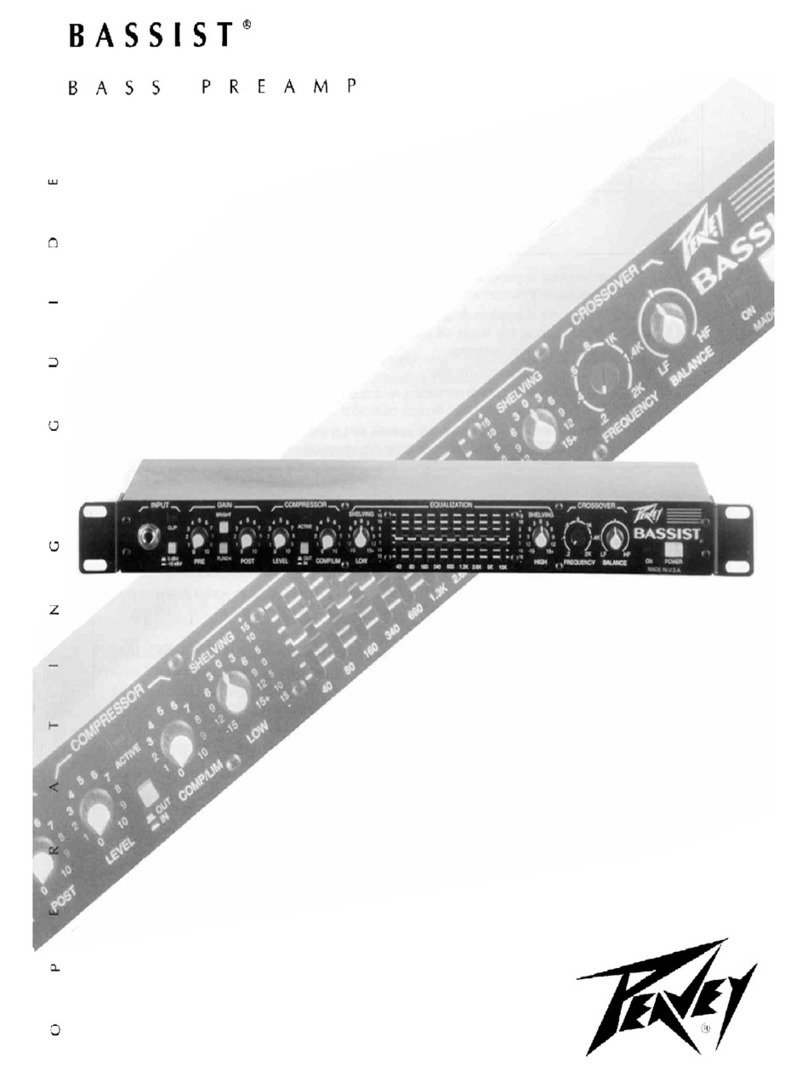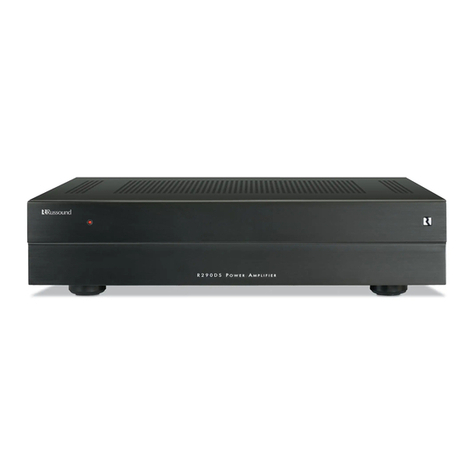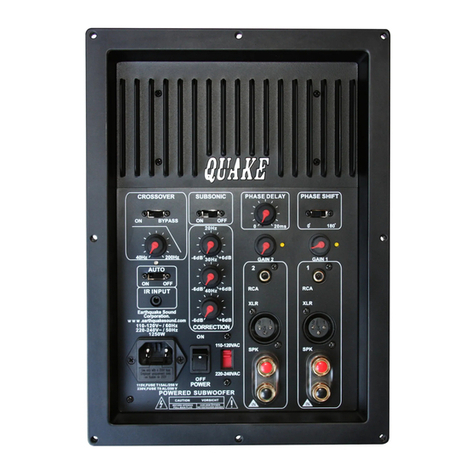
It is okay to leave your amp in standby mode all the
time if you listen to it every day. This feature keeps
the amplifiers warmed up and ready to play.
INPUTS
There are four pairs of inputs that correspond to the
input selector on the left front of your amp. These
are all line level inputs for things like CD & DVD
players, Tape decks, VCRs, computers, etc. The in-
put selector was custom made to mil specs especially
for this amplifier. It features a sealed design using sil-
ver contacts and 45 degree indexing.
PREAMP
The SE34-I contains two mono amplifiers and a dual
mono line level preamplifier. The preamp is voiced
to perfectly compliment the amplifiers. It is set up so
that 2 volts bring the amplifiers to full power if the
volume control is turned on max. The preamp de-
sign is a take-off of our ZTPRE and uses a single tube
with only 1 capacitor and 1 resistor in its signal path.
Can you drive the SE34-I with an additional pream-
plifier and or phono stage? Yes. In that instance you
would use the volume control on the integrated like
a gain control by turning the volume on the addi-
tional preamp to half way, and then adjusting the
volume (gain) control on the integrated so that it
plays at a normal listening level.
HEAT
This amplifier runs in class A which generates a lot of
heat. This is normal. The power transformers
should be hot, but not so hot that you can’t hold
your hand on it for several seconds. NOTE: The
heat level drops significantly in standby mode.
NOISE or HUM
The AC ripple measured on the SE34-I is less than 1
mv. This ultra LOW hum and noise should be non-
detectable on virtually all speakers.
SWITCHES
The SE34-I has three small toggle switches located
on the top front of the amplifier. These are used to
control the signature of your amp and are useful
during setup in achieving a good match with the rest
of your gear.
The two outside switches are gain related presence
controls. The higher the volume control, the more
effect these switches have. These switches add dy-
namics and presence to the sound and when used
will also kick up the gain a bit. The character of
these switches changes from source to source. For
example you may like the switch set one way for
CD, but find it sounds lots better the other way with
LP if the phono stage has in excess of 2 volts output.
There is no right or wrong way to use these
switches, and they can be operated while listening.
The center switch controls the sonic weight of the
amplifiers. It takes the signature from being super
flat and a little “British” sounding to being full with
lots of crunch most obvious in the bass. Stated sim-
ply if you want more or less bass presence, use the
center switch. This switch makes a GIANT change
and therefore effects both channels at the same
time. The outside two switches control each chan-
nel independently of each other, allowing you to get
a little more creative.
Using these three switches in combination will give 4
different signatures that can be quickly changed on
the fly while you listen. This makes it nice when you
have some recordings that sound better one way,
and some recordings that sound better the other
way.
All of these switches are effective when the amplifier
is used in single tube configuration–talked about in
the next section.
NOTE: These switches modify the over all gain or
loudness level, so you will be expected to compen-
sate with the volume control.
